Newton's second law – Examples
In the following examples of Newton's second law we will use the formula `F=ma` and if we expand on this we get
`F(n\e\t\ \f\o\r\c\e\ \o\n\ \o\b\j\e\c\t)=m\a\s\s\ \o\f\ \o\b\j\e\c\t\xx\a\c\c\e\l\e\r\a\t\i\o\n`
To help you understand the words in this formula a little more it may help to think of them as follows:
| Force | `=` | Push or pull | |
| Acceleration | `=` | Move | |
| Mass | `=` | Weight |
Be very careful with these ideas because there is a lot more meaning behind each of these words but as a quick rule of thumb, it may help jolt a memory.
Example 1
If you think of acceleration as movement, then:
"The greater the mass of the object, the more force needed to make it accelerate"
can be read as:
"The greater the mass of the object the more force is needed to make it move."
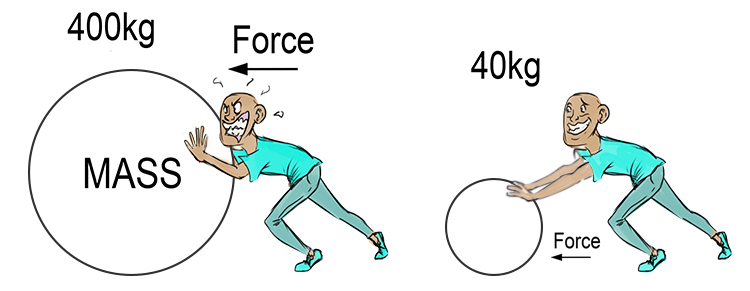
Objects with a greater mass have more inertia. It takes more force to change their motion. A 400kg rock is a lot harder to move than a 40kg rock.
Example 2
Use `F=ma`
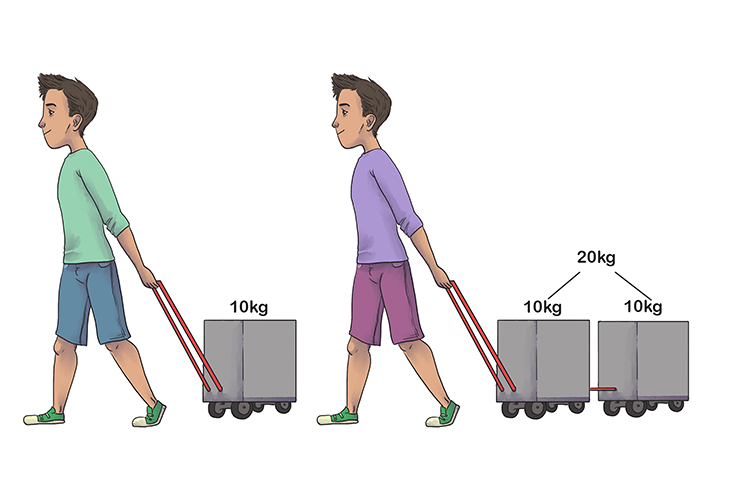
It will take twice the amount of force to accelerate the wagon with 20kg as the wagon with 10kg. But in order to make an object accelerate or move you have to apply a force.
Example 3
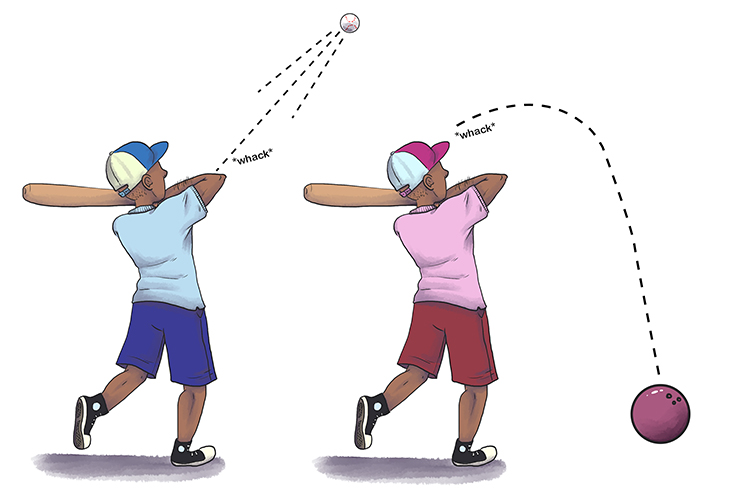
Because the mass of each ball is different, each ball will travel a different distance and at a different speed when it is hit with the same force.
Example 4
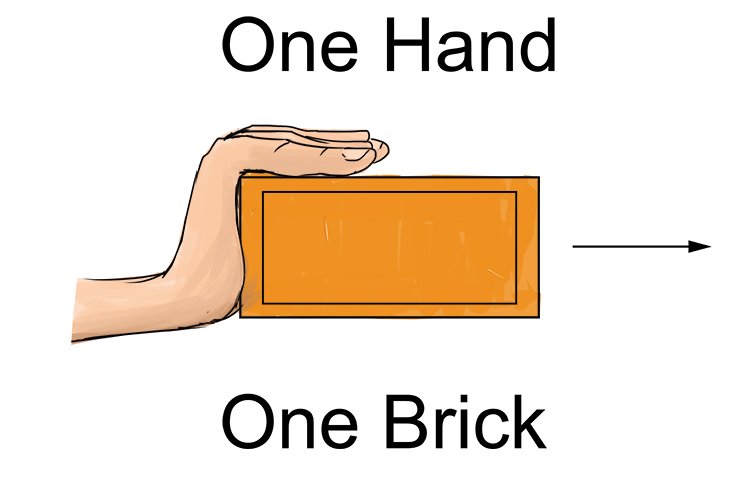
Force of hand accelerates the brick
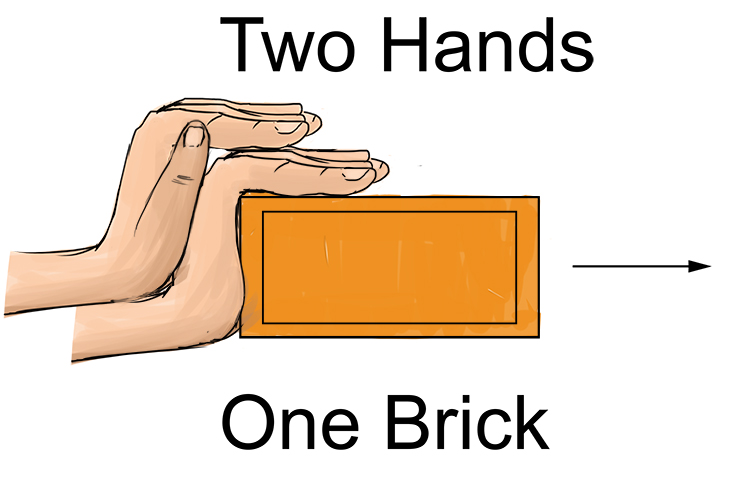
Twice as much force produces twice as much acceleration.
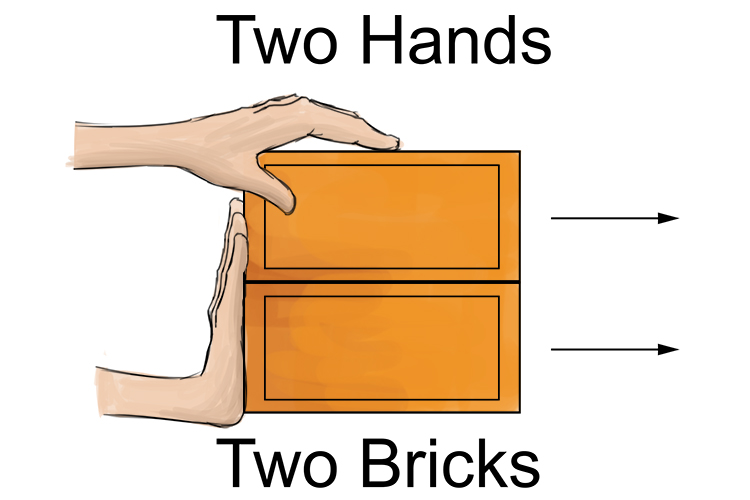
Twice the force on twice the mass gives the same acceleration.
Example 5
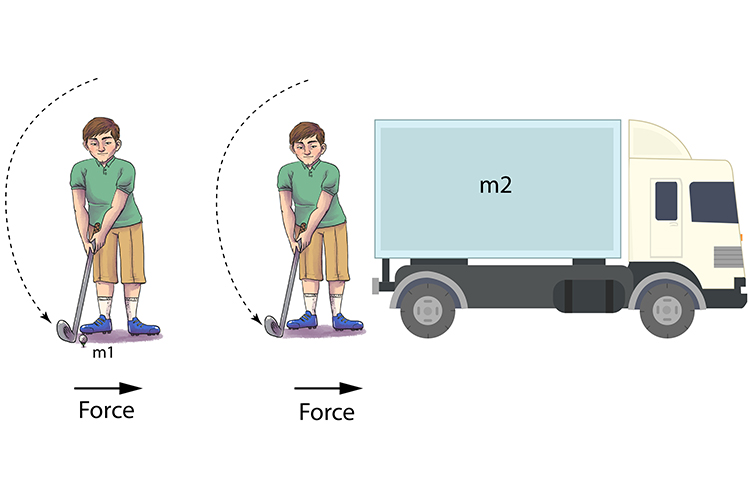
`F=ma`
`F=m1xxa` Large acceleration (large motion)
`F=m2xxa` Small acceleration (small motion)
How much an object accelerates depends on the mass of the object and how much force is applied to it.
The effect of a 10 Newton force on a golf ball would be much greater than that same force acting on a truck.
Example 6

NET FORCE `=0N`

NET FORCE `=20N`
Unbalanced forces cause acceleration.

NET FORCE `=2N`




